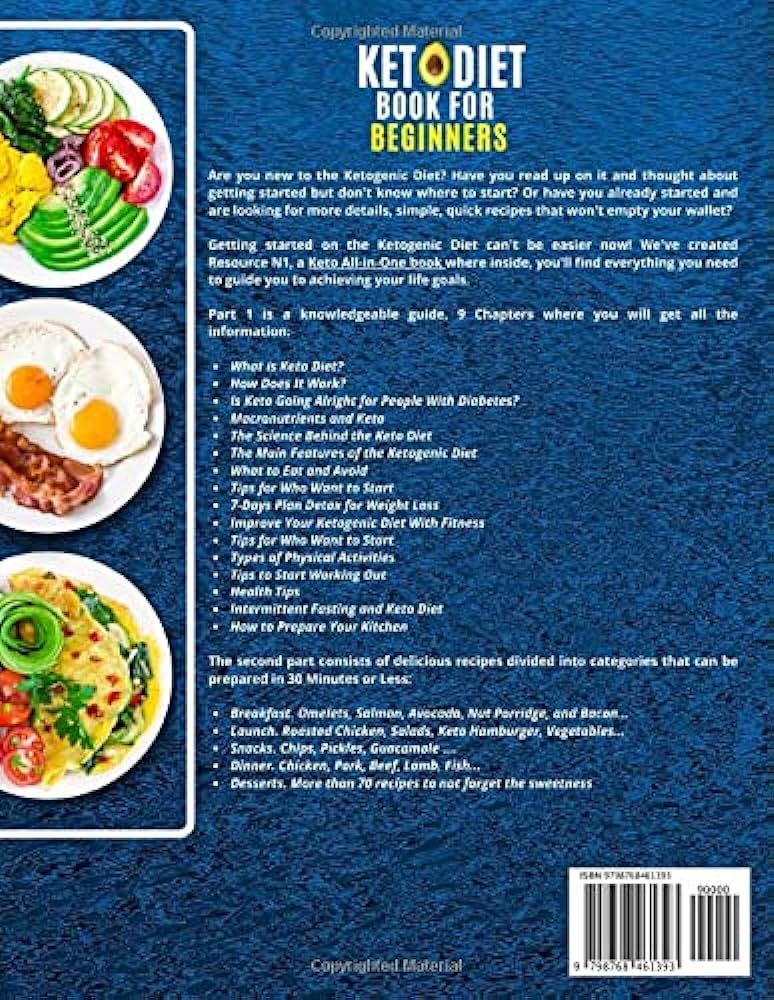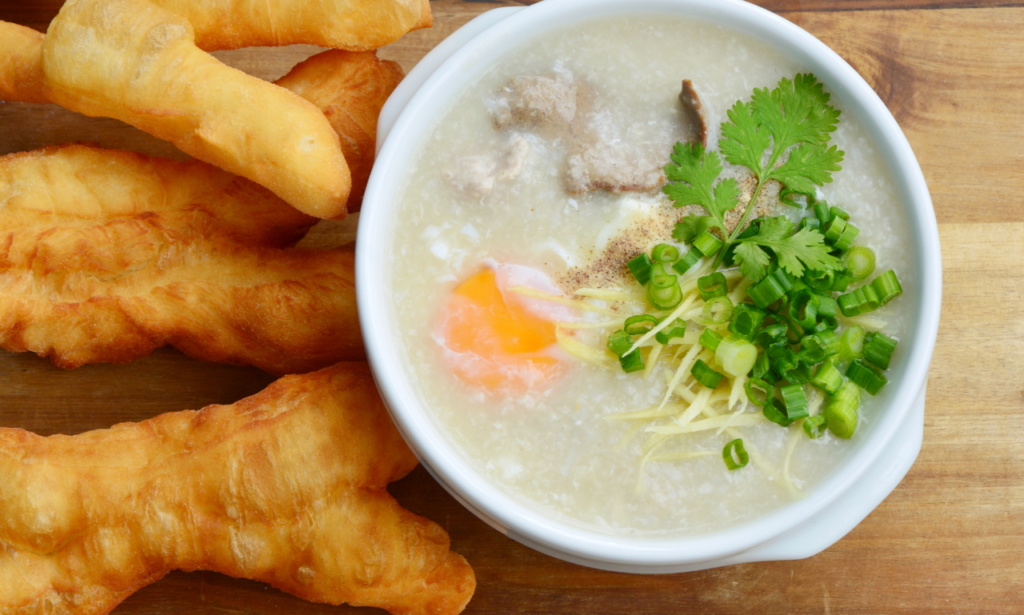Congee can be beneficial for weight loss due to its low calorie count and high water content. Its satiating nature may prevent overeating.
Congee, an Asian rice porridge, has steadily gained recognition as a health food, particularly among those aiming to reduce their calorie intake. Rich in water and typically low in calories, congee fills you up without significantly impacting your daily calorie budget, an ideal feature for weight loss diets.
It’s a versatile dish that can be easily tailored to fit various dietary needs by adding nutrient-rich ingredients like lean protein, vegetables, or beans. By doing so, you can enhance its nutritional value while still keeping it aligned with weight management goals. A bowl of warm, comforting congee isn’t just a potential ally in your weight-loss journey; it also offers a soothing meal option, brimming with possibilities for customization to keep your taste buds satisfied.
The Role Of Congee In Weight Management
Congee, a warm and comforting rice porridge, has been a staple in Asian cuisine for centuries. It’s not just a simple dish; it’s also a potential ally in the journey of weight management. Known for its versatility and digestibility, congee can play a pivotal role in controlling calories without sacrificing satisfaction.
Calorie Content Comparison With Other Breakfast Options

When it comes to losing weight, monitoring calorie intake is essential. A bowl of congee might just be the low-calorie breakfast you are searching for. Let’s see how it stacks up against other common breakfast dishes:
| Breakfast Item | Calories Per Serving |
| Congee (1 cup) | Approx. 200-250 |
| Granola (1 cup) | Approx. 600 |
| Bagel with Cream Cheese | Approx. 450 |
| Omelette (3 eggs) | Approx. 300 |
Clearly, congee offers a lower calorie count compared to many other options.
Satiety Factor And Its Impact On Snacking
Feel full for longer—that’s the satiety factor. Congee’s high water content helps it to fill your stomach, reduce hunger, and decrease the desire to snack. Here’s why feeling full can help with weight management:
- Reduce overall calorie intake by not snacking between meals.
- Prevent overeating at subsequent meals.
- Digests slowly, keeping you satisfied longer.
By including congee in your diet, you harness its satiety effect. This means fewer cravings and a steadier calorie intake throughout the day. All of this contributes to effective weight management and possibly, weight loss.
Nutritional Profile Of Congee
Congee, a traditional Asian rice porridge, is not just a comfort food. It’s a potential ally in your weight loss journey. Its nutritional simplicity makes it a smart choice for those reducing calorie intake.
Macronutrient Breakdown
Congee is a low-energy-dense food. This means it provides fewer calories while still being filling. Let’s delve into its macronutrient breakdown:
- Carbohydrates: It’s primarily made up of carbs, which is rice. These are good for energy.
- Protein: While not high in protein, congee often includes protein-rich toppings.
- Fats: Congee is naturally low in fat, making it a heart-healthy choice.
Vitamins And Minerals In Congee
Rice, the main ingredient in congee, is fortified with essential vitamins and minerals. These include:
| Vitamin/Mineral | Benefit |
| Iron | Carries oxygen in the blood. |
| Folate | Supports cell function and tissue growth. |
| Magnesium | Assists in muscle and nerve function. |
The Importance Of Fiber Content
Fiber is crucial for weight loss. It helps you feel full for a longer time. Whole grain rice can up the fiber in congee. Some facts about fiber in congee:
- Fiber regulates digestion.
- Fiber-rich food assists in controlling blood sugar levels.
- Choosing brown rice increases congee’s fiber content.
Customizing Congee For Weight Loss
Congee, a cozy rice porridge, offers versatility for those on a weight loss journey.
Its high water content provides a feeling of fullness with fewer calories. This makes congee a smart choice for managing hunger.
By tailoring your congee with the right ingredients, you can create a meal that supports your weight loss goals.
Let’s explore how to serve up a bowl of congee that’s both nutritious and delicious.
Choosing The Right Toppings
Toppings can make or break your diet-friendly congee. To keep it lean, choose toppings that are low in calories and high in nutrients.
Here’s a quick guide to smart topping choices:
- Green onions add flavor without extra calories.
- Sliced ginger for a spicy kick that boosts digestion.
- Seaweed or mushrooms for low-calorie savory notes.
- Lean proteins like shredded chicken or tofu.
- A sprinkle of sesame seeds for healthy fats and texture.
Low-calorie Congee Variations
Experiment with different grains to reduce the calorie count. Here are some congee variations:
- Brown rice congee is richer in fiber than white rice.
- Quinoa congee packs in protein and has fewer carbs.
- Barley congee is a hearty option that helps with satiety.
Incorporating Protein To Enhance Metabolism
Protein-rich add-ins speed up metabolism and help build muscle.
Consider these protein sources for your next bowl of congee:
| Protein Source | Amount |
| Chicken breast | 100g |
| Tofu | 150g |
| Shrimp | 100g |
Scientific Evidence On Congee And Weight Loss

Looking at congee for weight loss? Science might hold answers. Congee, a savory rice porridge, has long been a comfort food across Asia. Its potential for weight management is now under scientific scrutiny. Traditionally eaten for its health benefits, congee is low in calories, but is it effective for shedding pounds?
Studies On Congee And Body Weight Regulation
Research reveals interesting facts about congee’s role in weight management. Studies focus on its satiety index and glycemic index. Satiety refers to how full you feel after eating. Foods with high satiety can curb hunger longer, aiding weight loss. Congee’s high water content could make it a high-satiety food. As for glycemic index, it measures how fast a food raises blood sugar levels. Foods with a lower glycemic index, like congee, can aid in weight control.
- Congee’s low-calorie content may help reduce calorie intake.
- Its potential to increase satiety could lead to less snacking.
- The impact on blood sugar control can be beneficial for weight management.
One notable study from the Journal of the American College of Nutrition found that participants eating congee for breakfast consumed fewer calories later in the day.
Comparison With Other Weight Loss Diets
Congee offers a unique approach to weight loss when compared with other diets. It’s not a quick fix but a part of a balanced lifestyle. Unlike high-intensity diets, congee is gentle on the body. It is also more sustainable long-term than extreme diets.
| Diet Type | Caloric Intake | Satiety Level | Long-term Sustainability |
| Congee Diet | Low | High | High |
| Keto Diet | Varies | Medium | Low |
| Intermittent Fasting | Low during fasting | Varies | Medium |
Congee’s simplicity and adaptability make it a strong contender. One can tailor it to individual needs. Meanwhile, other diets may have stricter guidelines, making them harder to follow.
Integrating Congee Into A Weight Loss Diet Plan
The quest to shed pounds often brings a variety of diet plans to the table. Congee, a savory rice porridge popular in many Asian cultures, can play a role in weight loss strategies. This simple dish is not only easy to digest but also versatile, allowing integration into a diet plan without boredom. The key to success with congee lies in understanding how to incorporate it effectively for calorie control and nutritional balance.
Daily Caloric Deficit And Meal Planning
Creating a daily caloric deficit is essential for weight loss. A caloric deficit occurs when you consume fewer calories than your body needs to maintain your current weight. To ensure success:
- Calculate your daily calorie needs.
- Determine the caloric content of your congee. Opt for low-calorie ingredients.
- Plan other meals around your congee intake to maintain an overall caloric deficit.
Combining Congee Meals With Physical Activity
Weight loss is more effective with a dual approach. Pair a congee-based diet with regular physical activity. For optimal results:
- Set a weekly exercise goal.
- Choose activities that you enjoy.
- Eat congee after workouts to replenish energy and aid muscle recovery.
Long-term Sustainability Of A Congee-based Diet
Maintaining weight loss over the long term requires a sustainable approach. Congee can be a permanent part of your diet due to its nutritional value and flexibility. To keep your diet fresh and sustainable:
- Switch up the ingredients in your congee to get a range of nutrients.
- Use congee as a canvas for various healthy toppings.
- Listen to your body’s hunger cues and consume congee in mindful portions.

Credit: www.verywellfit.com
Potential Drawbacks And Misconceptions
While Congee is a popular choice for weight loss, it isn’t without its potential drawbacks. Misunderstandings often arise about its nutritional content and role in a healthy diet. Let’s break down some misconceptions and outline precautions.
The Risk Of High Sodium Intake
Congee can be high in sodium, especially when pre-made or seasoned with soy sauce. Excessive sodium leads to water retention and increased blood pressure. Opt for low-sodium broth and limit added salts to keep your congee healthy.
Understanding Glycemic Index And Blood Sugar Levels
Rice, the main ingredient in congee, has a variable glycemic index (GI). Foods with a high GI spike blood sugar levels quickly. Use brown rice or mix with other low-GI grains to keep your blood sugar stable.
Avoiding Overconsumption
Eating too much congee may lead to weight gain, despite its low-calorie profile. Portion control is key. Equally important is balancing your meal with protein and vegetables to enhance satiety.
Frequently Asked Questions Of Is Congee Good For Weight Loss
Can Congee Help In Losing Weight?
Yes, congee can be part of a weight loss diet. Its high water content and low calorie density make it filling and can prevent overeating. Choosing whole-grain varieties further supports weight loss by offering additional fiber.
Is Congee High In Calories?
No, congee is not high in calories. It’s primarily water-based, which makes it low in calorie content. The caloric value largely depends on the ingredients added, so for a lower-calorie version, minimize high-calorie mix-ins.
Does Congee Contain Dietary Fiber?
Yes, congee contains dietary fiber, particularly if made with whole grains. The fiber content aids in digestion and can contribute to a feeling of fullness, which helps in managing food intake and supports weight loss efforts.
How Does Congee Fit Into A Diet Plan?
Congee fits into a diet plan as a meal that provides satiety with minimal calories. It’s a versatile dish where you can incorporate protein and vegetables, aligning it with nutritional needs while maintaining a calorie deficit for weight loss.
Conclusion:
Embracing congee as part of a balanced diet can assist in weight management. Its low calorie count and high water content create a feeling of fullness, potentially curbing overeating. Yet, its efficacy hinges on overall dietary habits and portion control.
To optimize weight loss efforts, pair congee with regular physical activity and a variety of nutrient-rich foods.




Leave a Reply